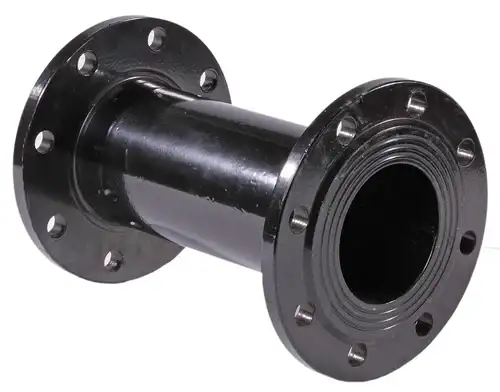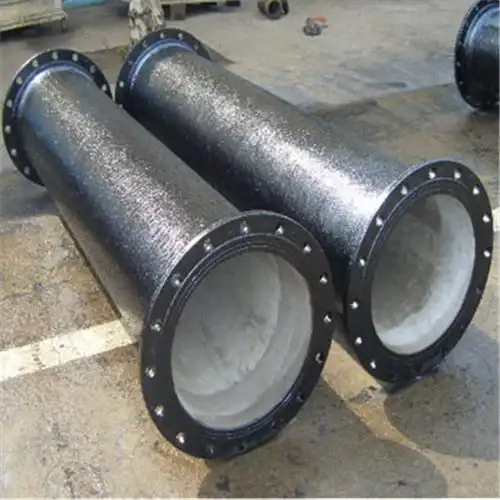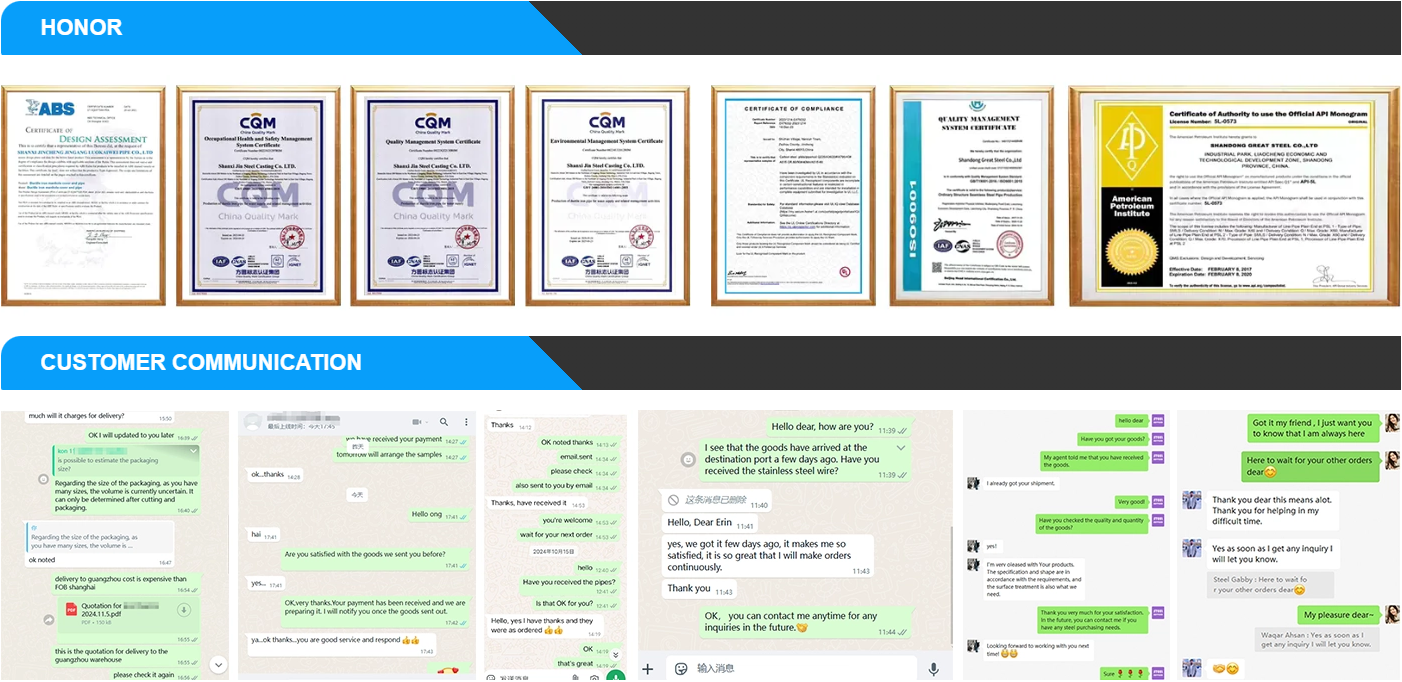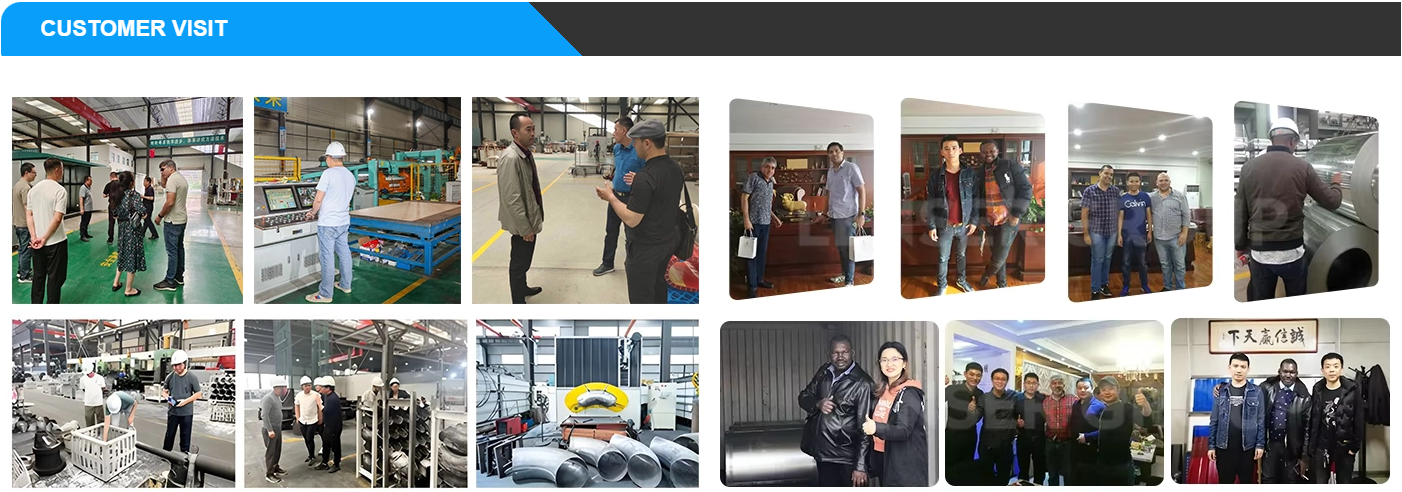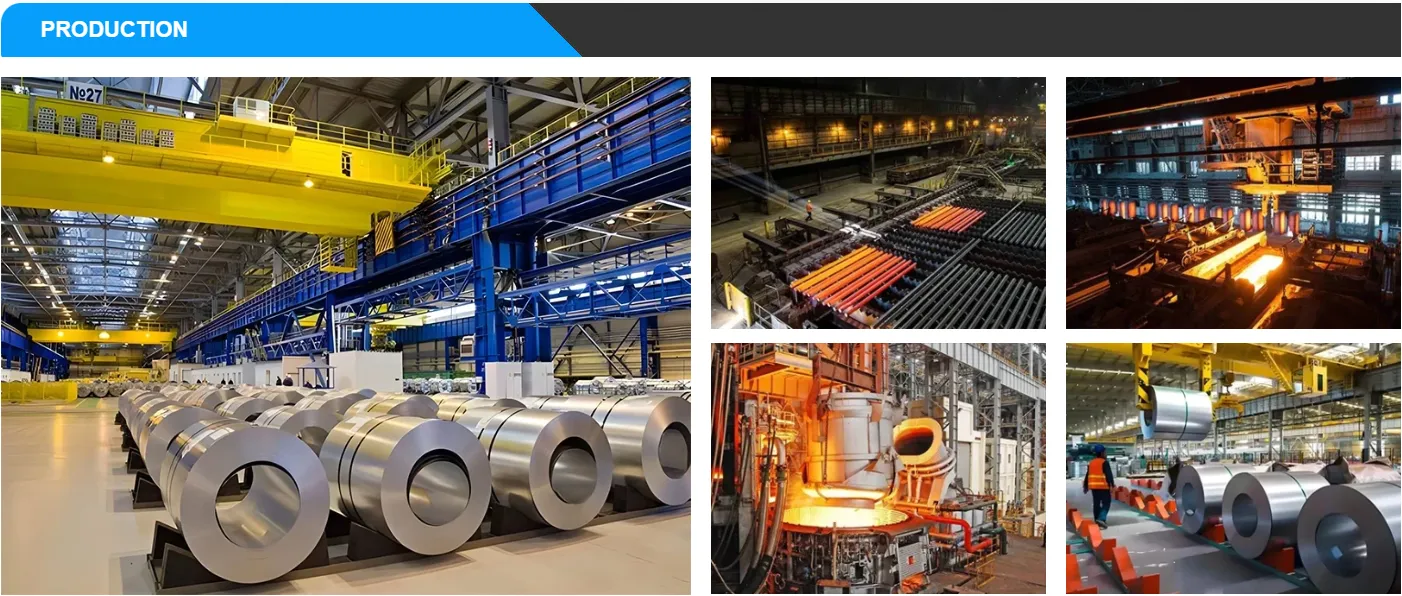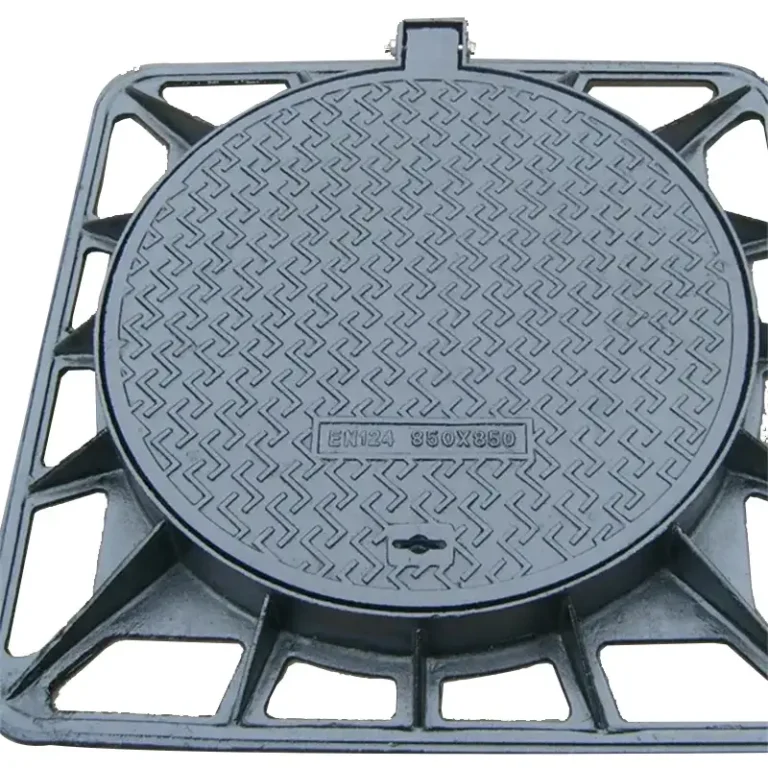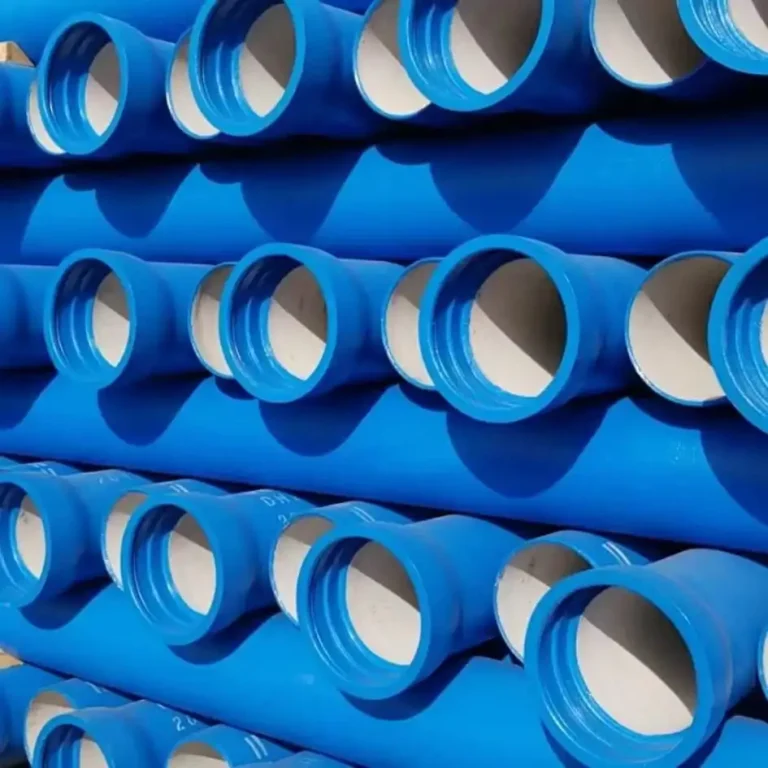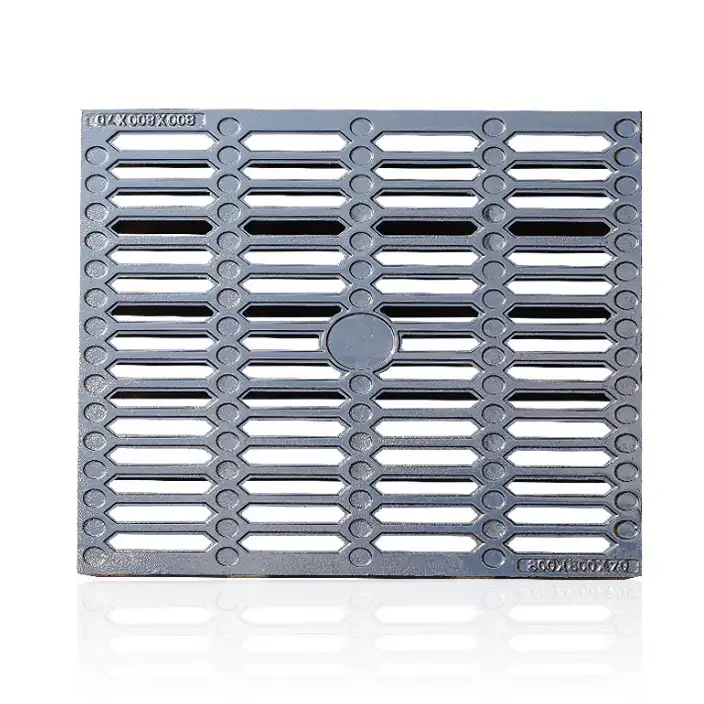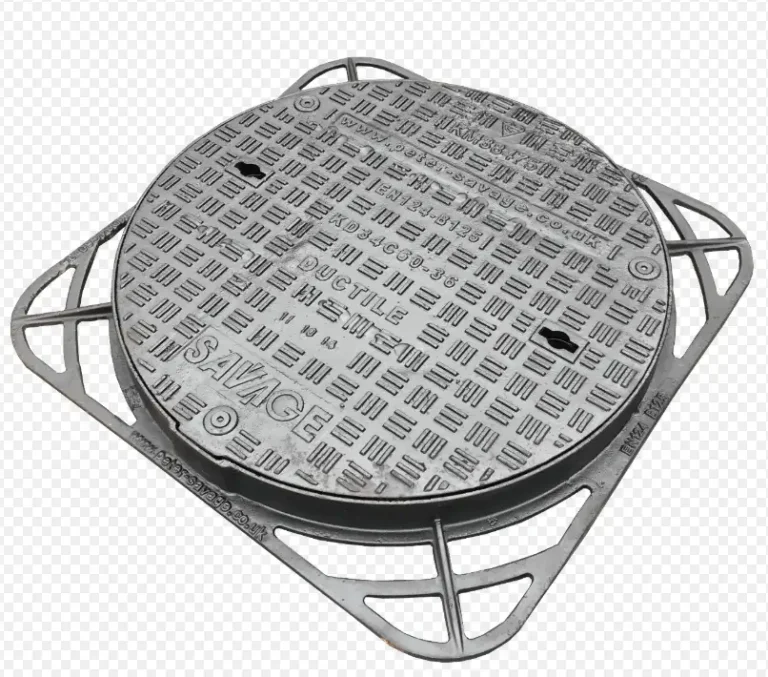Among the various types of ductile iron pipes, double flanged ductile iron pipes stand out due to their design and functionality. A double-flanged pipe consists of flanges at both ends of the pipe, which allows for secure and easily removable connections to other pipeline sections, valves, or equipment.
1. What Are Double Flanged Ductile Iron Pipes?
Double flanged ductile iron pipes are a type of ductile iron pipe designed with flanges on both ends, which allows for simple and secure connections to other components in a pipeline system. These pipes are widely used in various industries, including water distribution, sewage systems, and industrial applications where high-pressure performance and long-term reliability are required.
Key Characteristics of Double Flanged Ductile Iron Pipes:
-
Durability: High strength and resistance to impact, making them ideal for heavy-duty applications.
-
Corrosion Resistance: Ductile iron pipes are often coated with cement mortar or epoxy to enhance corrosion resistance.
-
Ease of Installation: Double flanges allow for easy connection and disconnection from other system components, facilitating maintenance and upgrades.
-
Pressure Rating: Suitable for medium to high-pressure applications.
2. Benefits of Double Flanged Ductile Iron Pipes
Double flanged ductile iron pipes offer numerous advantages in pipeline systems. These benefits make them the preferred choice for many infrastructure projects.
-
Reliable Sealing: The double flanged design ensures tight, leak-proof seals, preventing water or gas leakage in high-pressure systems.
-
Flexibility: Ideal for systems requiring frequent maintenance or modification, as they allow easy disassembly.
-
Long-Lasting Durability: Resistant to corrosion, abrasion, and high-pressure conditions, ensuring a long lifespan for the pipeline.
-
Cost-Effective: Despite their higher upfront cost compared to some other materials, the durability and low maintenance needs of ductile iron make them a cost-effective option in the long run.
Table: Advantages of Double Flanged Ductile Iron Pipes
| Advantage | Description |
|---|---|
| Leak Prevention | The double flange provides a secure, leak-free connection. |
| Easy Maintenance | The flanged connection allows for quick disassembly during maintenance. |
| High Pressure Resistance | Suitable for medium to high-pressure applications. |
| Corrosion Resistance | Coatings like cement mortar or epoxy improve durability in harsh conditions. |
| Cost-Effective | Reduced long-term repair and maintenance costs due to pipe longevity. |
3. Applications of Double Flanged Ductile Iron Pipes
Double flanged ductile iron pipes are used in a variety of applications due to their strength and versatility. Some common applications include:
-
Water Distribution Systems: Ductile iron pipes are commonly used for the transportation of potable water, ensuring safe and reliable water delivery.
-
Sewerage and Drainage Systems: They are also employed in sewage and stormwater drainage systems due to their high resistance to corrosion and abrasion.
-
Industrial Pipelines: Suitable for industries that require high-pressure pipelines, such as chemical plants, power plants, and manufacturing facilities.
-
Fire Protection Systems: Used in fire protection networks, where high-pressure resistance and easy access are necessary.
4. How to Install Double Flanged Ductile Iron Pipes
The installation of double flanged ductile iron pipes involves several critical steps to ensure a secure and leak-proof connection.
Installation Steps:
-
Preparation: Ensure the pipe ends are clean and smooth. This is crucial for achieving a proper seal between the flanges.
-
Positioning the Pipes: Align the two ends of the pipe with the adjacent sections or valves. Make sure that the flanges are properly oriented.
-
Gasket Placement: Insert the gasket into the flange joint. The gasket should be of a material suitable for the fluid or gas being transported (e.g., rubber or EPDM).
-
Bolting the Flanges: Tighten the bolts gradually in a star pattern to ensure an even distribution of pressure across the flanges.
-
Inspection: Once bolted, inspect the joint for leaks by pressurizing the system.
Important Considerations During Installation:
-
Torque Specifications: Follow the manufacturer’s recommended torque values for bolting to prevent over-tightening or under-tightening.
-
Pipe Alignment: Ensure that the pipe alignment is correct to avoid stress on the flanges and gaskets.
-
Pressure Testing: Conduct a pressure test after installation to ensure that the connection is secure and leak-free.
5. Sizes and Dimensions of Double Flanged Ductile Iron Pipes
Ductile iron pipes come in a wide range of sizes to suit different applications. Double flanged pipes are typically available in sizes from 3 inches to 72 inches in diameter.
Common Pipe Sizes:
-
3” – 12”: Commonly used for residential and commercial water distribution systems.
-
14” – 36”: Suitable for medium-sized industrial and municipal systems.
-
40” – 72”: Used for large-scale infrastructure projects such as wastewater treatment plants or large distribution networks.
Table: Comparison of Ductile Iron Pipe Sizes
| Pipe Size | Typical Application | Pressure Rating |
|---|---|---|
| 3” – 12” | Small-scale water distribution systems | Up to 150 psi |
| 14” – 36” | Municipal and industrial water systems | 150 – 350 psi |
| 40” – 72” | Large-scale infrastructure and wastewater | 350 psi and above |
6. Price Range of Double Flanged Ductile Iron Pipes
The price of double flanged ductile iron pipes varies depending on several factors, including pipe size, material quality, and manufacturing process.
Price Estimates:
-
Small Sizes (3” – 12”): Approximately $200 – $500 per unit.
-
Medium Sizes (14” – 36”): Typically range from $500 – $1,200 per unit.
-
Large Sizes (40” – 72”): Can cost between $1,200 – $5,000 or more per unit, depending on the specifications.
Factors Affecting Price:
-
Material Coatings: Additional coatings for corrosion resistance, such as epoxy or cement mortar lining, can increase the price.
-
Custom Sizes and Features: Custom lengths, special coatings, or high-pressure ratings can lead to higher costs.
-
Manufacturing Brand: Reputable manufacturers may offer higher-quality products at a premium price.
7. Comparing Double Flanged Ductile Iron Pipes with Other Pipe Types
Double flanged ductile iron pipes are often compared to other types of piping, such as PVC, steel, and HDPE pipes. Each pipe type has its own advantages and is suited to different types of applications.
Table: Comparison of Double Flanged Ductile Iron Pipes vs Other Pipe Types
| Property | Double Flanged Ductile Iron Pipe | PVC Pipe | Steel Pipe | HDPE Pipe |
|---|---|---|---|---|
| Durability | Highly durable and impact-resistant | Less durable, prone to cracking | Durable but susceptible to corrosion | Flexible but not as durable as ductile iron |
| Corrosion Resistance | High, with cement mortar/epoxy coatings | Limited, susceptible to UV degradation | High, with anti-corrosion coatings | Moderate, needs regular maintenance |
| Pressure Resistance | High, suitable for medium to high pressure | Low to medium pressure | High, suitable for high-pressure systems | Medium, suitable for low-pressure applications |
| Ease of Installation | Requires flanged connections, can be complex | Easy to install with solvent welding | Requires welding, more complex | Easy to install, flexible |
| Cost | Higher upfront cost | Low cost | Medium cost | Medium cost |
8. Common Challenges in Double Flanged Ductile Iron Pipe Installation
Despite their many advantages, double flanged ductile iron pipes come with some installation challenges:
-
Alignment Issues: Misalignment during installation can cause stress on the flanges and lead to leakage.
-
Corrosion: Even with coatings, ductile iron pipes may still experience corrosion if not properly maintained.
-
Installation Time: The process can be time-consuming due to the need for precise alignment and bolting.
9. Maintaining Double Flanged Ductile Iron Pipes
Regular maintenance is crucial to ensure the longevity and performance of double flanged ductile iron pipes. Key maintenance tasks include:
-
Leak Detection: Regularly inspect flanged joints for signs of leakage or corrosion.
-
Gasket Replacement: Replace gaskets every few years or if they show signs of wear.
-
Pressure Testing: Perform routine pressure tests to ensure the system is operating at optimal levels.
10. Conclusion: Why Choose Double Flanged Ductile Iron Pipes?
Double flanged ductile iron pipes are an excellent choice for high-pressure, durable, and flexible pipeline systems. Their benefits include easy maintenance, corrosion resistance, and long-term cost savings. Whether you’re installing a new system or upgrading an existing one, these pipes offer reliability and strength for a wide range of applications.
Frequently Asked Questions (FAQs)
1. What is the difference between single-flanged and double-flanged ductile iron pipes?
Single-flanged ductile iron pipes and double-flanged ductile iron pipes are both types of ductile iron pipes that feature flanged ends for connecting to other components in a pipeline system. However, they have different structural designs and are suited to different types of applications.
-
Single-Flanged Ductile Iron Pipes: These pipes have only one flange at one end. The flange is typically used for connecting the pipe to a valve, fitting, or another pipe with a similar flange. The other end of the pipe is typically plain, meaning that it is either welded or connected to another piece using a mechanical joint. Single-flanged pipes are often used in systems where one connection is needed, and the opposite end will either be welded or connected to a different type of fitting.
-
Double-Flanged Ductile Iron Pipes: As the name suggests, double-flanged pipes have flanges on both ends. This design makes it easier to connect the pipe to two other sections of a pipeline or to other system components, such as valves, tees, or elbows. The double-flanged design allows for quick installation and disassembly, which is particularly useful for systems requiring frequent maintenance or modifications. Double-flanged pipes are ideal in high-pressure applications and when a secure, robust connection is needed at both ends.
Key Differences:
| Feature | Single-Flanged Pipe | Double-Flanged Pipe |
|---|---|---|
| Number of flanges | One (1) flange on one end | Flanges on both ends |
| Common Uses | Connection to a valve, fitting, or mechanical joint | Connection to two components or valves |
| Installation Complexity | Simpler to install but may require welding or mechanical joints | Requires precise alignment, but easy to install/disassemble |
| Application | Residential and low-pressure systems | High-pressure, industrial, and utility systems |
2. Can double flanged ductile iron pipes be used in corrosive environments?
Yes, double-flanged ductile iron pipes can be used in corrosive environments, but special precautions need to be taken to prevent corrosion over time. Ductile iron is naturally more resistant to corrosion compared to regular cast iron, but it still requires protective measures when exposed to aggressive or harsh environmental conditions like sewage systems, chemical processing, or marine environments.
Here are a few methods to ensure long-term durability in corrosive environments:
-
Coatings and Linings: Ductile iron pipes can be coated with epoxy, cement mortar, or polyurethane coatings to protect the pipe from external and internal corrosion. Epoxy coatings are particularly effective for providing a barrier to corrosive chemicals and moisture. Cement mortar lining helps prevent corrosion from within the pipe, especially in water and wastewater applications.
-
Cathodic Protection: In extremely corrosive environments, cathodic protection systems can be installed to reduce the corrosion rate. This method involves applying a low-voltage electrical current to the pipe to counteract the natural electrochemical reaction that causes corrosion.
-
Corrosion-Resistant Flanges: The flanges on double-flanged ductile iron pipes can also be coated or made from corrosion-resistant materials, such as stainless steel or high-grade alloys, depending on the severity of the environment.
By using the right coatings and protection systems, double-flanged ductile iron pipes can perform reliably in corrosive environments for many years.
3. How do I ensure a secure connection when installing double-flanged ductile iron pipes?
Installing double-flanged ductile iron pipes requires precise steps to ensure a leak-proof and secure connection. Here are some key practices to follow during installation:
-
Pipe Alignment: Make sure that both flanged ends of the pipe are aligned correctly with the flanged components (such as valves, tees, or other pipes). Misalignment can lead to uneven distribution of pressure and potentially cause leaks or damage to the gasket and flanges.
-
Gasket Selection: Select the appropriate gasket for the material being transported (water, gas, chemicals, etc.). Rubber gaskets are commonly used for water and sewage systems, while EPDM gaskets are suitable for higher temperatures and chemical applications. The gasket should be in good condition and properly seated to avoid any gaps.
-
Bolting Process: When bolting the two flanges together, tighten the bolts in a star pattern to ensure an even distribution of pressure. Over-tightening can lead to gasket damage, while under-tightening may result in leaks. Follow the manufacturer’s recommended torque specifications for the bolts.
-
Pressure Testing: After installation, conduct a hydrostatic pressure test to verify that the connections are secure and leak-free. This test ensures that the system can handle the required pressure without failure.
-
Inspection: Periodically inspect the joints for signs of wear or leakage. Gaskets may need to be replaced over time, especially in high-pressure or corrosive environments.
4. What is the cost difference between ductile iron pipes and other pipe materials?
The cost of double-flanged ductile iron pipes varies depending on factors such as pipe size, length, coating, and the manufacturer. However, when compared to other common pipe materials such as PVC, steel, and HDPE, ductile iron pipes tend to be more expensive upfront but offer significant cost advantages in the long term.
Here’s a general breakdown of costs:
| Pipe Material | Upfront Cost | Long-Term Cost | Durability | Maintenance |
|---|---|---|---|---|
| Ductile Iron | Higher upfront cost, $200 – $5,000 per unit depending on size | Low, as maintenance is minimal over the years | Very high durability, 50+ years | Low, minimal maintenance required |
| PVC | Lower upfront cost, $50 – $500 per unit | Moderate, as replacement may be needed in the long term | Medium durability, 20-50 years | Moderate, may require repairs or replacement |
| Steel | Medium to high upfront cost, $200 – $1,500 per unit | Moderate, higher risk of corrosion | High durability, 50+ years | Higher maintenance costs due to corrosion risks |
| HDPE | Medium upfront cost, $100 – $1,000 per unit | Moderate, but may require more frequent repairs | Medium durability, 25-50 years | Moderate, flexible but susceptible to stress cracking |
Why Ductile Iron Costs More:
-
Manufacturing Process: The process of casting and alloying ductile iron is more complex, which increases its cost compared to materials like PVC and HDPE.
-
Strength and Durability: Ductile iron pipes offer superior strength and are ideal for high-pressure systems, which makes them more cost-effective over their lifespan.
-
Coatings and Lining: Ductile iron pipes often require additional coatings, which contribute to their higher cost. However, these coatings also extend the pipe’s life by protecting it from corrosion and abrasion.
5. How do I perform routine maintenance on double-flanged ductile iron pipes?
Routine maintenance is essential for ensuring the long-term performance of double-flanged ductile iron pipes. Regular inspections and timely interventions can prevent issues such as leaks, corrosion, and alignment problems. Here’s a maintenance checklist for ductile iron pipes:
-
Inspect Flange Bolts: Check the bolts that secure the flanged connections. Over time, bolts can loosen due to pressure changes or vibrations. Tighten bolts using the correct torque specifications, but avoid over-tightening.
-
Check Gaskets: Gaskets should be inspected for wear or damage. If there are signs of degradation (cracking, deformation, or hardening), they should be replaced immediately to maintain a secure seal.
-
Corrosion Monitoring: Regularly check for any signs of corrosion or rust on the pipe exterior. If there are signs of external corrosion, consider applying a protective coating or cathodic protection to prevent further damage.
-
Clean the Interior: If the pipe is used for transporting water or other liquids, periodically inspect the interior for any buildup of debris, scale, or mineral deposits. Cleaning may be required to maintain flow efficiency.
-
Pressure Testing: Regularly perform pressure tests to ensure that the pipeline is operating within safe pressure limits. This will help detect any weaknesses or potential issues with the flanged connections.
-
Visual Inspections: Look for signs of pipe misalignment, cracking, or unusual wear patterns. Any noticeable issue should be addressed promptly to avoid more extensive damage.
6. Are double-flanged ductile iron pipes suitable for residential water systems?
Yes, double-flanged ductile iron pipes can be used for residential water systems, but they are typically not the first choice for small-scale residential applications. Here’s why:
-
Cost: Ductile iron pipes tend to be more expensive than other materials like PVC or PEX. For residential applications, where the pressure requirements are typically lower, homeowners might prefer a more budget-friendly option.
-
Pressure Requirements: Double-flanged ductile iron pipes are commonly used in industrial, municipal, or high-pressure systems where durability and strength are critical. Residential systems generally have less rigorous pressure demands, which means other pipe materials like PVC or PEX can often meet these needs at a lower cost.
-
Installation: The installation process for double-flanged ductile iron pipes can be more complex due to the need for proper bolting, alignment, and sealing. For a residential system, where simplicity and ease of installation are key considerations, materials like PVC or PEX are often preferred.
When Should You Use Double-Flanged Ductile Iron Pipes in Residential Settings?
-
For high-pressure systems or applications where the pipe may be exposed to harsh conditions (e.g., sewage or chemical processing).
-
In larger residential developments or commercial buildings where long-term durability is a primary concern.
In summary, double-flanged ductile iron pipes are suitable for residential water systems if the project involves high pressure, heavy-duty applications, or needs that call for long-term durability. However, for typical home use, alternatives like PVC and PEX are more commonly employed.
